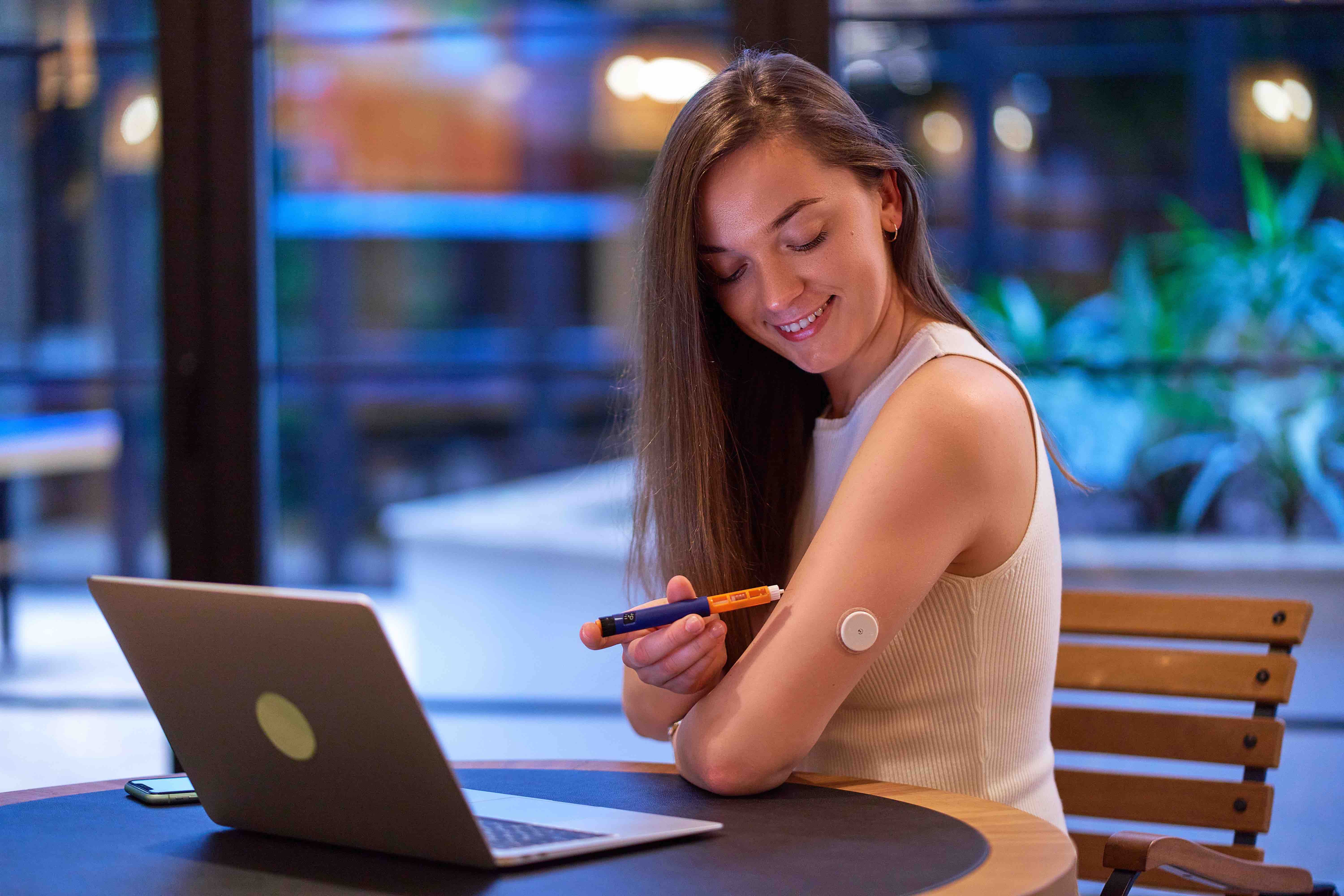- Center on Health Equity & Access
- Clinical
- Health Care Cost
- Health Care Delivery
- Insurance
- Policy
- Technology
- Value-Based Care
Bolus Insulin Injection Frequency, Smart Pen Engagement Linked With Glycemic Control in T1D
A real-world study conducted across 9 European countries found that bolus injection frequency and engagement with a smart pen to administer insulin were associated with improved glycemic control among young adult patients with type 1 diabetes (T1D).
Daily bolus injection frequency and engagement with a smart pen to administer insulin were associated with glycemic control among young adult patients with type 1 diabetes (T1D) in a real-world study. The findings, published in Diabetes, Obesity, and Metabolism, suggest a treatment regimen combining effective smart pen use and an optimal bolus injection strategy could help improve glycemic control in this patient population.
“Advances in insulin delivery systems and continuous glucose monitoring (CGM) have the potential to enhance treatment satisfaction by addressing some of these barriers,” the authors wrote. “This may result in increased treatment adherence and improved disease outcomes for individuals with T1D. Smart insulin pens, such as the NovoPen 6 device, are an example of these advances, providing additional support for individuals with T1D in tracking and managing their insulin injections.”
Smart insulin pens collect and store data on administered insulin injections, including the date, timing, and dosage, which can then be uploaded to devices or data repositories and analyzed. In tandem with CGM data, smart insulin pen data can help health care providers and patients identify insulin injection patterns and glucose metrics to factor into discussions about disease management.
The retrospective, observational study aimed to evaluate whether the frequency of bolus insulin injection and engagement with a smart insulin pen were associated with glycemic control among young adult CGM users with T1D at several clinics across 9 European countries.
Insulin injection | Image credit: Goffkein - stock.adobe.com

A total of 1194 patients using the NovoPen 6 and CGM were included in the analysis, which examined 110,264 total days of data from the cohort. The mean (standard deviation [SD]) number of bolus insulin injections per day was 4.8 (1.8) across the study population, which the authors noted is lower than the 6-8 injections considered optimal for reaching glycemic targets. In the study population, 52.6% of participants used fast-acting insulin aspart (faster aspart) and 47.4% used aspart. Participants using aspart and faster aspart had similar characteristics.
Most patients only used 1 smart pen to administer either aspart (n = 406) or faster aspart (n = 417). A further 25% (n = 300) also used a smart pen with basal insulin degludec, and 4.1% (n = 55) also used a basal insulin detemir. Participants uploaded data from the smart pen into an app a mean of 1.7 (2.3) days over a 14-day period.
Most participants (53.9%) used intermittently-scanned CGM (isCGM) with intervals 15 minutes apart, with 45.3% using real-time CGM (rtCGM) with intervals of 5 minutes. With isCGM, users must scan the device, while rtCGM devices transmit data to a receiver that updates real-time. Those using isCGM scanned their devices a median of 6.7 times per day, and no strong correlation between the rate of isCGM scans and the number of bolus injections was seen.
In the overall population, mean time in range (TIR) was 59% (21.4%), time below range (TBR) was 3.5% (3.7%), and time above range (TAR) was 37.4% (22.6%).
There was a significant association between the number of daily bolus injections and TIR. Participants who administered an average of 3 daily bolus injections were estimated to have an 11% chance of having TIR of at least 70%, but the probability increased as the mean number of daily injections increased. The mean percentage of TIR for participants who had 6 bolus injections per day was 64.4% (95% CI, 62.5%-66.3%), while those with 3 bolus insulin injections per day had a mean TIR of 46.7% (95% CI, 44.4%-49.0%).
A higher number of bolus injections per day was also statistically significantly correlated with lower mean glucose levels and with lower glucose management indicators and glucose variability. TIR was lower on days when higher-than-average numbers of injections were administered, however, and the same was seen for TBR. Those who typically administered fewer bolus injections saw a higher reduction in percentage of TIR (P = .0001).
Increased smart pen engagement was significantly associated with improved TIR across the study population, but there was no association with TBR. Participants who averaged 7 uploads in 14 days (1 upload on average every other day) had the highest estimated mean TIR at 63.5%, compared with a TIR of 55.1% in participants who had a mean of 0 uploads daily in a 14-day period. The estimated TIR decreased among those with very high upload frequency of more than 10 days per 14-day period, however.
The study was limited by factors typically limiting observational studies, including selection bias and bias due to unknown confounders. Most participants resided in Sweden (85%), potentially limiting the generalizability of the results. As the study was observational, the associations cannot be considered conclusively causal. Future studies focusing on individuals’ behaviors, injection patterns, and treatment outcomes would add to these findings.
“To conclude, daily bolus insulin injection frequency was shown to be a strong predictor of glycemic control in adults with T1D,” the authors wrote, “…There was also a positive association between smart pen engagement and TIR, with an increased frequency of uploads leading to improved TIR. A carefully planned treatment regimen involving an optimal bolus insulin injection strategy, and effective smart pen engagement may result in better glycemic control among adults with T1D.”
Reference
Hellman J, Hartvig NV, Kaas A, Møller JB, Sørensen MR, Jendle J. Associations of bolus insulin injection frequency and smart pen engagement with glycaemic control in people living with type 1 diabetes. Diabetes Obes Metab. 2024;26(1):301-310. doi:10.1111/dom.15316
